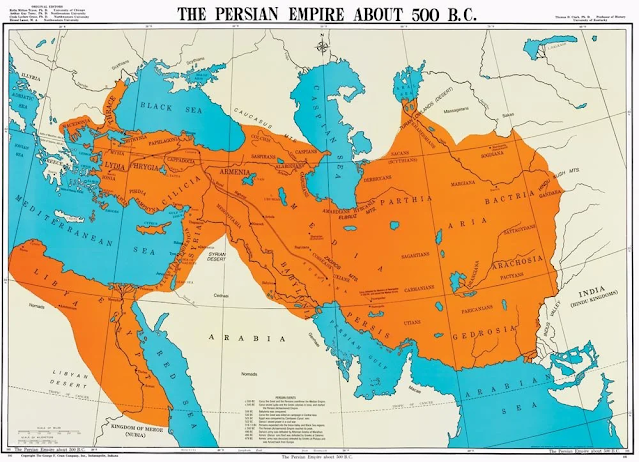There isn’t much information on Afghan Bolani, where it
originated and what was the first type of Bolani that was consumed. But
gathering information, and analysing the geo-political conditions of the period,
one can form theories as to what came first. As to my earlier post on the
origins of Bolani, the rustic flatbread can be said to be as old as 224 AD or
even more.
It is interesting to note that earlier forms of Bolani was
gluten-free made of either wild barley, millets or oats flour. Barley was the
most common cereal and it was not until the agricultural development of the Achaemenid
Empire, that wheat was introduced to the region. Meat, lentils, potato, cucumber
was abundant. Some historians have pointed out that in Babylonia and Elam bread
was also made from the seeds of dates. Probably some form of sweet bread was
common during that era. Mustard, onion, garlic, peas were also grown and was
probably added to the filling while making Afghan Bolani.
Afghan Bolani: The Ancient Street Food
One can image that the Bolani flatbread must have been the Saucijzenbroodjes
of the ancient times. It is a traditional stuffed bread that can be called
similar to the Dutch Crunch bread of the region. The ustic food was the to-go
food for travellers, a healthy snack for all those working outside or on farms.
Historical evidence also suggests that flatbreads were among the earliest processed
food, which was ideally baked than fried.
Traditional Afghan Cuisine
Traditionally, bread was dominant in the Afghan Cuisine. Wheat
became a key staple in the traditional Afghan food from 550 BCE along with
other grains. With wheat came in the stuffed flatbread or otherwise known as
Bolani.
Origin of Potato in Persia
There is also a belief that potato was first grown in Shiraz
or Bushehr in the southern region of Persia. It is not said when potato was
introduced to Persia, but soon potato became one of the root vegetables dominants
in the Persian Empire. Soon it spread to the northern parts of Persia such as Pashand
and Faridan in Isfahan and other provinces. The only possible explanation to
the origin of potato might have been the traders, either from South America or coming
from the Asian-European trade routes. It is safe to say that potato was the
easiest filling for a stuffed naan bread, which later became to be known as the
Afghan Bolani.
There is some historical evidence that suggests that potato
might have come during the Zand dynasty (1751 – 1789 CE). We can guess that
earlier than this, the filling might have been meat or lentils.
Stuffed Flatbread
With abundant of lentils, sesame, onions, spinach and
potatoes, a stuffed naan bread or stuffed flatbread was easily formed to
provide a more protein-based meal to the ancient Afghans. While bread was sold separately
throughout the bazaars, stuffed flatbread or Bolani was a snack or a compact
meal for many.
What kind of meat do Persians eat?
Meat filling was highly popular a variety of meat was
consumed from horses, camel, beef, birds, and oxen. Tender meat such as rabbit,
lamb, goat and deer were also popular. Herbs such as cilantro, parsley, and cumin would have likely been used for
flavoring the fillings, along with garlic and onions.
Interesting to note that chicken came to Persia from India. As pointed out in
my earlier blog, Chinese scallions or “Gandana” was also a cultural inclusion credited
to the traders from the silk road. Gandana filling came at a much later stage
in the Afghan diet. Cheese, dates,
and fruits
might also have been used for fillings.
Best Stuffed Bread
Bolani was probably one of the easiest stuffed bread recipes
for most ancient Persians. In time, each specific region came up with their
versions of Bolani and nowadays we find stuffed breads in Egypt, the Balkan
regions, India and even in some parts of Europe. Although not well-documented
in historical texts, the Achaemenid and Sassanian empires were known for their
culinary diversity and advanced agricultural techniques, which would have
influenced the evolution of these early forms of stuffed flatbreads.
If you like our content, do follow us on social media and
write down your thoughts below. We would love to know what you think. This blog
is also available in Dutch language here.





